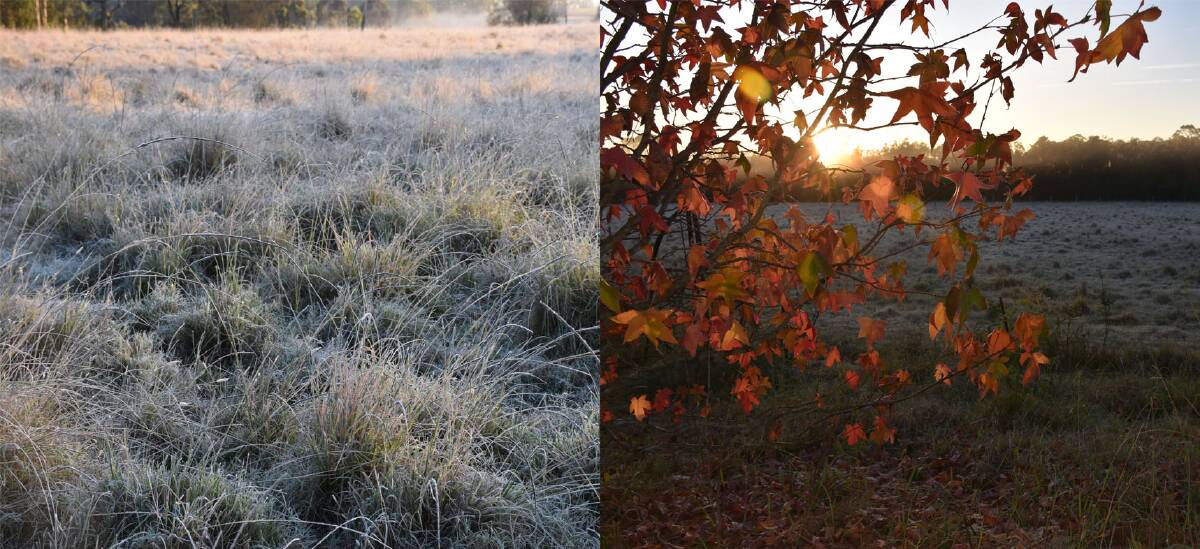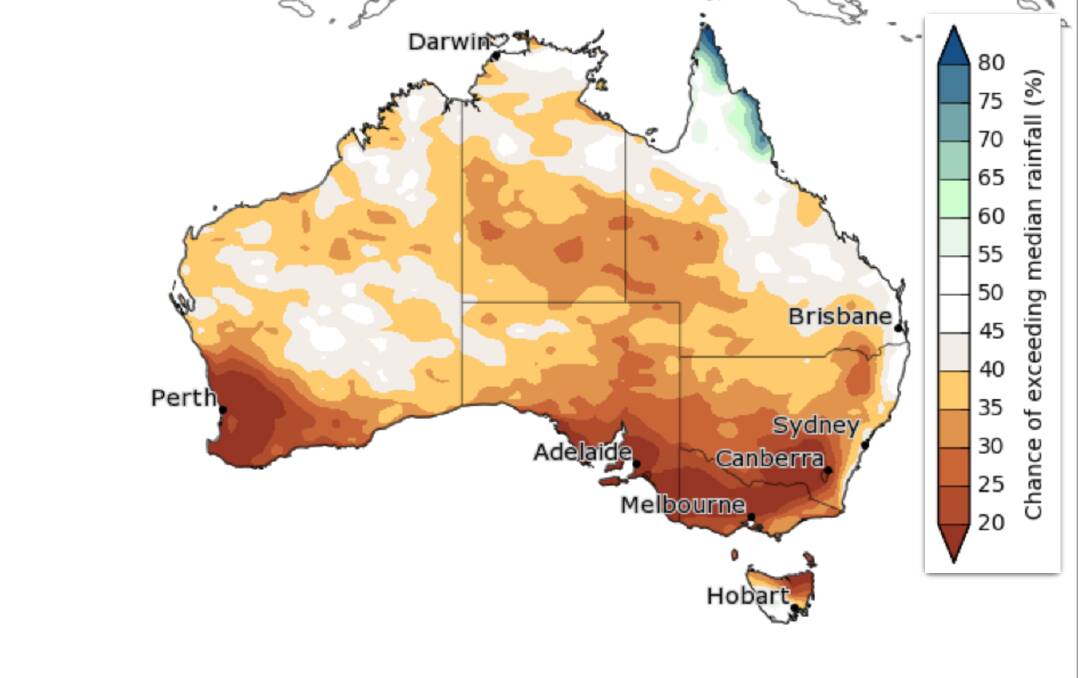
The winter of 2023 outlook from the Bureau of Meteorology is in stark contrast to what we experienced in 2022.
Subscribe now for unlimited access.
or signup to continue reading
Whereas this year's map is predominately brown, meaning below average rainfall, with only a dash of green in north Queensland last year it was green in most districts indicating above average rainfall.
Drier and warmer seasonal conditions are predicted from June to August although the record frosts in recent weeks and early snow falls in the southern alps may make people question the warmer part of that equation.
However daytime temperatures have and are expected to be higher than average.
The Pacific Ocean is currently ENSO-neutral (neither La Nina nor El Nino). Sea surface temperatures are warmer than average in the west and the east of the tropical Pacific.
While all international climate models indicate it is very likely that tropical Pacific Ocean temperatures will reach El Nino thresholds during the southern hemisphere winter, an atmospheric response is also required for an El Nino to be declared.
Thus far, little shift has been observed in atmospheric ENSO indicators with trade winds and cloudiness patterns in the Pacific remaining indicative of ENSO-neutral conditions. The 30-day SOI has dropped below the El Nino threshold, but sustained values are required for it to be considered a part of an El Nino response.

The ENSO Outlook remains at El Nino WATCH. This indicates there is an increased risk of an El Nino occurring this year, at least double the usual chance. History shows that when the ENSO Outlook has reached El Nino WATCH, El Nino has subsequently developed in about half of those years. El Nino typically suppresses rainfall in eastern Australia during the winter and spring months.
The status of the ENSO Outlook does not change the Bureau's long-range forecast for drier and warmer conditions across much of Australia for winter. The Bureau's climate model takes into account all influences from the oceans and atmosphere when generating its long-range forecast.
The Indian Ocean Dipole (IOD) is currently neutral. All five models suggest that a positive IOD event could develop in winter. A positive IOD typically supresses winter and spring rainfall over much of Australia, and if it occurs with El Nino, it can exacerbate El Nino's drying effect.
With the likely return of El Nino the Federal government is turning its attention to future droughts with discussions on drought preparedness and response underway on a new Australian Government drought plan.
Minister for Agriculture, Fisheries and Forestry, Murray Watt said "We've just published our review into the Australian Government national drought plan-which means fresh ideas and new voices have explored hands-on approaches to managing drought."
"While reviewing the current plan, more than 100 farming, community, environmental and other organisations had their say on how we could make improvements."

